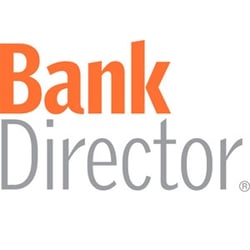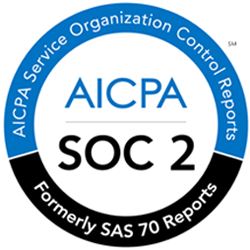Why a Mix of Digital and Traditional Communication is Key to Customer Retention During a Bank Merger
When a bank merger happens, it’s not just two financial institutions that are joining together — it’s two sets of customers. Understandably, the customers of acquired banks can feel a lot of uncertainty about the future of their financial services, and these doubts can lead to increased customer attrition. In fact, research has shown that around 17% of acquired customers will leave for another institution after their bank is acquired, which can result in severe declines in a merger’s profitability.
There are many reasons why customers might reject the change that comes from a bank merger, but most come down to wariness of the unknown. People understandably wonder how their relationships and accounts will transition to the new institution. Will they need to reschedule their automatic payments? How will access to online banking change? What interruptions do they need to prepare for?
Some people also worry about physical bank branches. If customers are used to visiting the same location and interacting with the same branch staff, they’ll likely be anxious to know whether that branch will stay open and available for them after the acquisition.
These types of concerns are especially relevant now given that bank mergers and acquisitions in the United States are taking a healthy turn. More deals have been struck in recent months, which is in sharp contrast to the lack of acquisitions during the pandemic. In fact, 132 deals have been announced as of August, compared to only 103 deals announced through the entirety of 2020. As we move farther and farther away from the pandemic, then, the number of M&A deals in the banking industry will only grow.
Therefore, effective communication with customers is more important than ever. It is vital that bank leaders can explain changes clearly and patiently to alleviate customers’ worries and convince them that the merger will provide for a better banking experience in the future.
Why is effective communication with customers critical during bank mergers and acquisitions?
It’s not uncommon for customers to leave their current bank (or at least begin looking at options) when an acquisition of their bank is announced, even if they previously have been loyal customers. That’s especially true if information is not relayed clearly and regularly. Mixed communication is vital during normal operations, but during times of major change such as mergers and acquisitions, frequent and transparent communication can keep doubtful customers from leaving.
However, not all communications are created equal during a merger. It is imperative to strike the right balance between informative, reassuring, and salesy messaging. If customers feel like you are just trying to sell the new bank to them, they might think that their needs are not being valued. Although new benefits are great to point out, remember that the most important information you can give is the reassurance of a smooth transition and details of what to expect and when. The fewer actions acquired customers need to take, the better; that can reduce anxiety and feelings of being overwhelmed. Perhaps most importantly, you need to communicate how and when customers will be able to start banking with you.
Customers need to know how their checking, savings, or loan accounts will transition and if there will be changes to terms or fees. They also need to know how to access online banking, auto-pay, and bill pay services. If they have direct deposit, then they need to know if they are responsible for relinking payments or if that will transfer automatically during the merger. Additionally, they should know what the “conversion weekend” will be like and whether they will be able to visit their bank branch at that time if necessary.
These are the valid concerns running through your customers’ heads. If your merger’s communications are not focused on providing this information, then your customers will be left with more questions, frustration, and worry. Clear and informative communication during a merger, on the other hand, offers your customers the peace of mind they need to remain loyal.
What are the best methods for communicating with customers during mergers?
It is clear that customers need more communications during a merger, but they also need a variety of ways to interact with your bank at this critical time. A balance of digital and traditional communication tends to work best; it allows every customer to gain the information they need.
Reassure with direct mail
When deciding which method of communication works best during a merger, you must take into account financial regulations. For example, the following information has a mail regulatory requirement. Therefore, it must be mailed to the physical address of each bank customer:
- The actual terms and conditions of your accounts, including disclosures, privacy policies, and fee schedules.
- Any loan transfer information, such as how loan accounts will transition and their terms.
- The details of any branch closures.
Besides these regulated communications, there is other information that is best sent via mail to increase the likelihood of retention. For example, you can send a personalized “welcome package” with regulatory disclosures and additional information. This might include how the customer’s accounts will transition; key dates around when accounts, platforms, and branches will officially transition on conversion weekend; and an overview of the acquiring bank.
Overall, mailing these critical pieces of information is a sign to customers that you are taking their potential concerns seriously and improves their entire experience during the merger process. Mailed communications can also enhance supplemental digital communications you send during the merger. In fact, 80% of marketers say that direct mail improves their overall multichannel campaign performance. We know that customers receive a barrage of online messages and alerts every day, so direct mail can certainly validate and magnify your digital messages to make them more memorable.
Furthermore, it is a best practice to send several other touchpoints leading up to conversion weekend to begin building relationships. These additional touchpoints might include an announcement letter, information about online banking, and reminder notifications.
Boost Traditional Communications with Digital Methods
As a best practice, you should enhance mail communications with digital and social experiences so customers can build and test out their relationship with your bank in the ways that work for them.
For example, you can have all mailed communications drive customers to a dedicated online hub or merger microsite that allows them to get additional information. This also gives the acquiring bank the opportunity to continuously add information. In addition, you could reinforce direct messages with follow-ups over email, assuming customers have opted in to email communications.
We are also starting to see banks use social media channels to reinforce both direct mail and email, especially when the messages can go out via the acquired bank’s platform. This allows the new institution to encourage customers to follow them on social media and remind them of the merger and conversion weekends.
We know people interact with various types of media. Therefore, the more channels you leverage to inform customers, the more likely you are to get through to them. Someone might put their mail aside and not look at it, or they might wait by the letterbox to check their daily correspondence. They might scour through their email every day, or they could avoid their inbox completely.
At a time of uncertainty, you have the ability to reassure your future customers. Make sure you are providing as many options and touchpoints as you can so they feel supported. Put transparency at the very top of your priority list, and get ready to use traditional and digital communications in tandem to provide the critical information customers need during a merger.
Megan Allinson, Integrated Marketing Director, BKM Marketing
Article originally published on International Banker in November 2021.

















